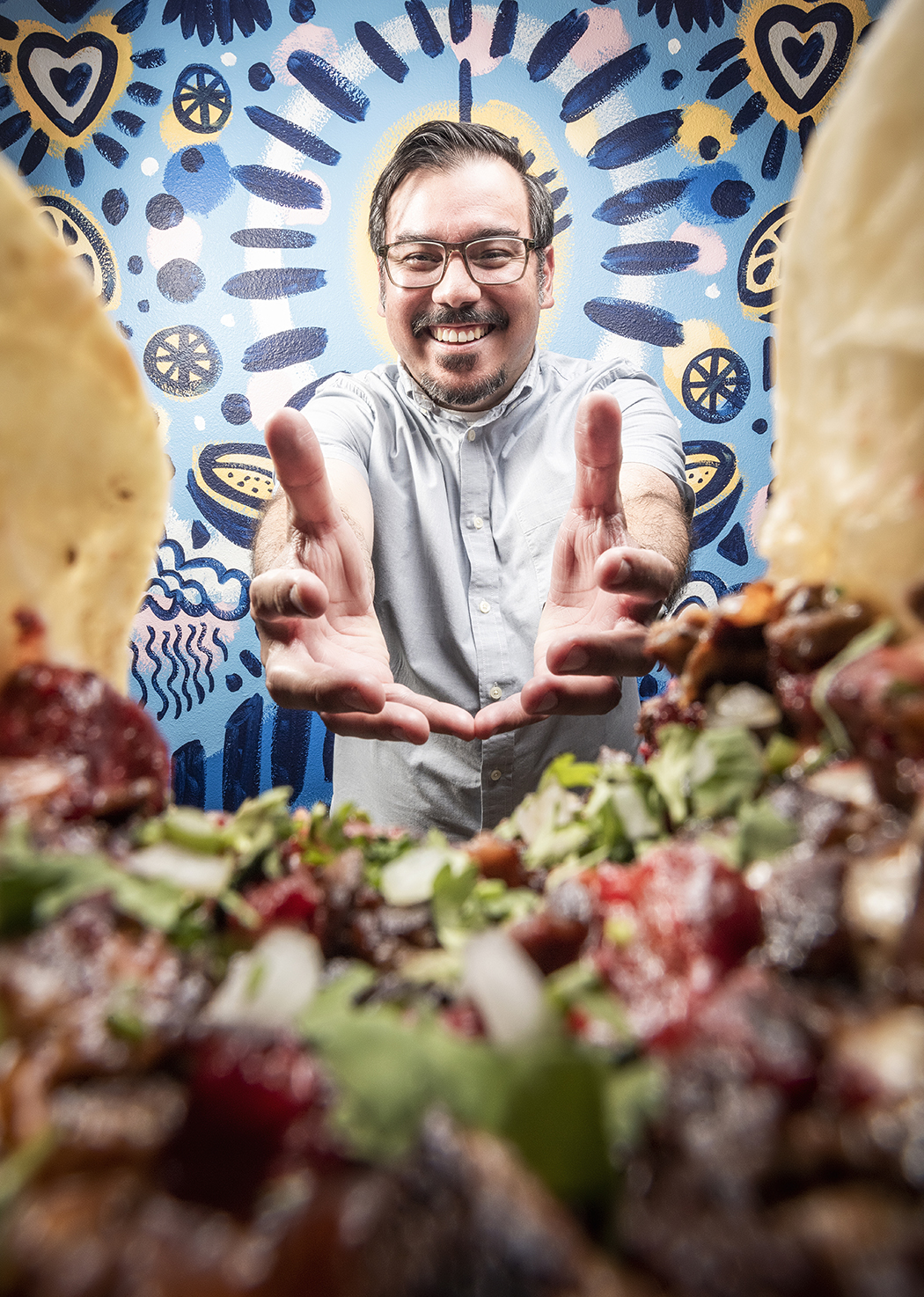
Photography by Danny Fulgencio
José R. Ralat made the New York Times, the Today Show and news around the world when Texas Monthly hired him in September as its first taco editor.
The job came six years after the magazine hired its first barbecue editor, Dallas resident Daniel Vaughn. “Tacos are important to every Texan, which I think is why Texas Monthly made this position,” Ralat says. “They’re essential not only to the Texas diet but also to the Texas identity, and that’s just growing.” Ralat first started writing about tacos for the Dallas Observer about 10 years ago, shortly after he and wife, Jessica Salcedo Ralat, moved to Oak Cliff from Brooklyn. He started his own website, The Taco Trail, and contributed freelance work to publications including Eater while working as the full-time food and beverage editor for Dallas-based Cowboys & Indians magazine.
Here are Ralat’s tips on how to sniff out what sets taquerías apart:
- First thing I would say is “packed parking lot.” If there’s a packed parking lot, and there’s a line out the door, I definitely want to go check out that place.
- The next thing is the name and whether it reflects a regional specialty. There are a lot of Mexican restaurants named “Jalisco” something. That is because Jalisco is at the center of what we often think of as Mexico. It’s where mariachi comes from, for example. If it’s legit Jaliscienses, then for example, I want to see birria, things like tortas ahogadas, specific regional dishes that signify that, yes, this is really a place that serves the type of food that is advertised by this restaurant’s name.
- You’ll see menus often hand-written on windows and facades, so that’s another clue. Taquerías and Mexican restaurants like to advertise when they make their own tortillas. So if you’re interested in that, you’re going to look for things that say “handmade tortillas,” tortillas hechas a mano, or recién hecho, freshly made. But you’re going to pay a higher price for that, and your meal will take longer.
- If the taquería or the restaurant makes one tortilla in-house but not the other, get the one that’s made in house. Sometimes you have to ask because I’ve been in restaurants where they won’t tell you that they make their own tortillas. They just give you tortillas out of the bag.
- To check if a place is actually making its own tortillas, I try to snoop around and see if I can smell the corn from either outside or near the kitchen. Do they make them from maseca, which is masa harina dehydrated, or is it made from nixtamal? One is full of preservatives, and they’re not the same.
- Another thing is the sauces: Do they have just your average red and green salsa? Is there a third salsa? Is there a special salsa like Tejas, which to my knowledge is the only restaurant in Texas so far that serves soy sauce-based salsa negra, which is out of Sonora and southern Arizona. It has a saguaro cactus as a marquee, but it also has something else indicative of Arizona. I don’t know, but it’s a special sauce, and it’s very good.
- Always ask about extra salsas. If the menu lists salsas, ask questions about them.
- Look at other tables. What is everyone else eating? If they’re not eating tacos, my gosh, do not order the tacos. Order what everyone else is eating.





